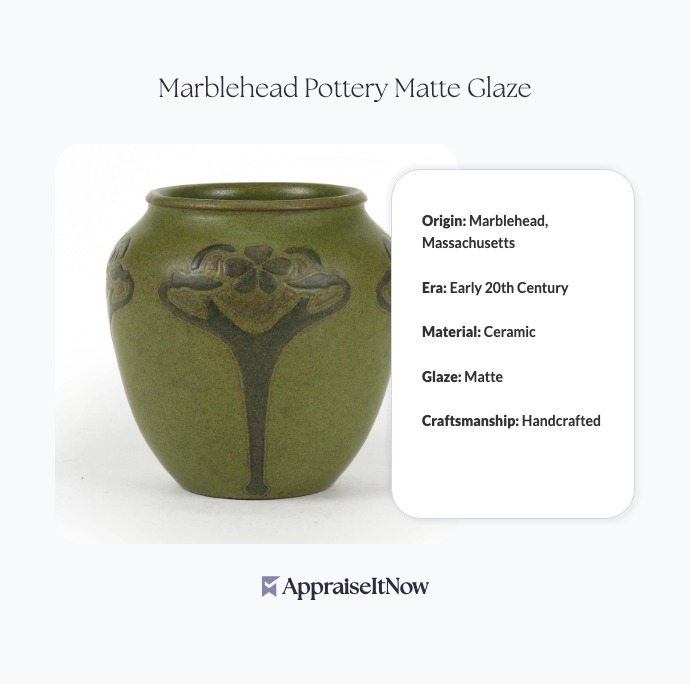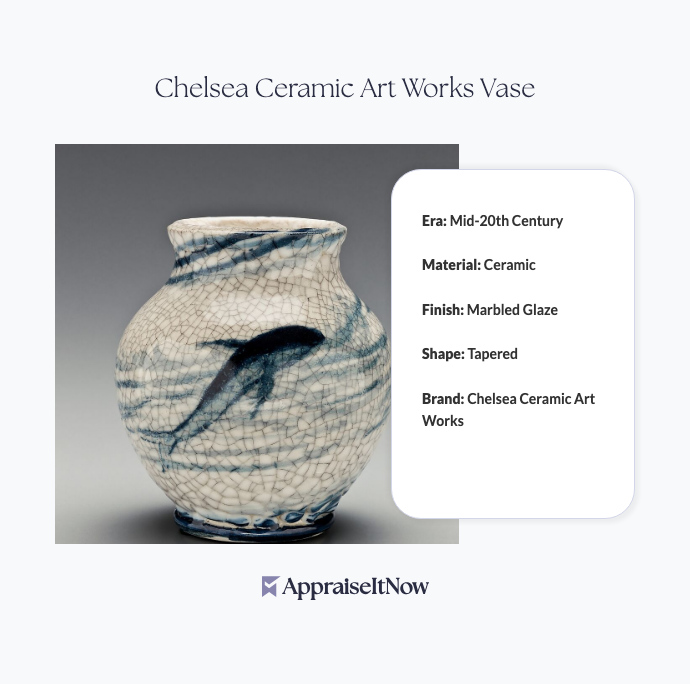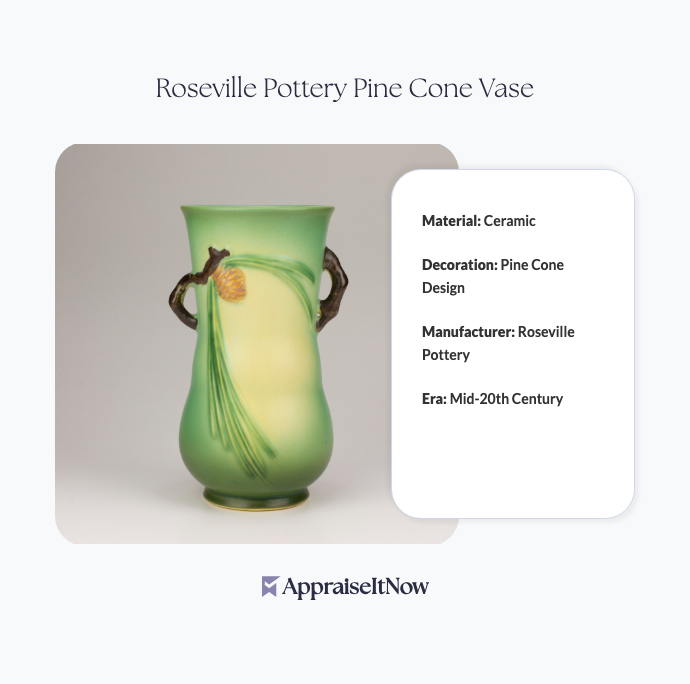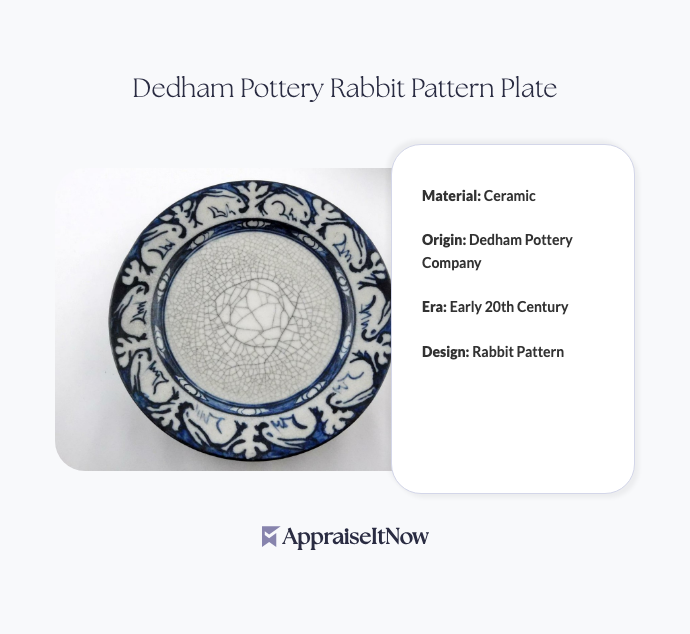<h1>How to Get Your Marblehead Pottery Matte Glaze Appraised</h1>
<p>Marblehead Pottery Matte Glaze represents one of the most sought-after segments of American art pottery, with quality pieces commanding prices between <strong>$1,500 and $4,000</strong> depending on condition, design, and provenance. If you own or are considering acquiring a Marblehead piece, understanding how to obtain a professional appraisal ensures you have accurate documentation for selling, buying, insuring, or estate planning purposes.</p>
<h2>Understanding Marblehead Pottery's Value Foundation</h2>
<p>Your Marblehead Matte Glaze piece carries historical significance rooted in the Arts and Crafts movement of the early 20th century. Produced in Marblehead, Massachusetts beginning in 1910, these hand-crafted vessels represent the work of skilled artisans who intentionally rejected mass production in favor of organic, individually designed forms. The distinctive matte glaze finish—available in earthy tones like muted greens, grays, and browns—creates a soft, velvety appearance that collectors find particularly appealing.</p>
<p>Why is Marblehead famous among pottery enthusiasts? The pottery earned its reputation through uncompromising craftsmanship and design philosophy. Each piece was unique, featuring hand-painted decorative elements and forms that embodied Arts and Crafts principles. This emphasis on individual artistry rather than industrial standardization drives collector demand and justifies professional appraisal for significant pieces.</p>
<div class="callout tip"><p><strong>Collector's Insight</strong></p>
<p>Marblehead pieces with strong provenance documentation and unusual glaze colors or decorative designs often command premiums 20-30% above standard market values.</p></div>
<h2>Key Features That Determine Your Marblehead's Value</h2>
<h3>What Makes Your Piece Valuable</h3>
<p>When appraisers evaluate Marblehead Pottery Matte Glaze, they examine several critical factors that directly impact market value. The most desirable pieces combine exceptional design, pristine condition, and documented maker's marks.</p>
<p>The glaze itself tells part of your piece's story. Marblehead's trademark matte finish results from specific firing techniques that created that characteristic soft surface. Pieces with evenly applied, undamaged glaze command higher valuations than those with chips, cracks, or reglazed sections. Similarly, the color palette matters—certain rare glaze combinations are particularly coveted by sophisticated collectors interested in <a href="/blog/appraisals-for-fine-porcelain-and-ceramics-valuing-delicate-artistry">pottery and ceramic appraisals</a>.</p>
<p>The form and decorative program contribute substantially to value. Hand-painted designs featuring stylized ships (a common Marblehead motif), florals, or geometric patterns enhance desirability. Larger vases with bold, well-executed decoration typically outperform smaller utilitarian pieces. The presence of the Marblehead ship mark or incised maker's mark adds authenticity verification that appraisers specifically seek.</p>
<h3>How to Identify Marblehead Pottery</h3>
<p>Identifying your piece as authentic Marblehead is the first step toward accurate appraisal. Look for the characteristic <strong>ship mark</strong>—an incised or impressed image of a stylized sailing vessel—which appears on most pieces. Some Marblehead pottery also features the full "Marblehead Pottery" text mark. These marks appear on the base or occasionally on the side of the piece.</p>
<p>The construction quality itself speaks to authenticity. Marblehead pieces feature exceptionally clean potting with thin, even walls. The clay body has a distinctive warm tone, and the matte glaze should feel smooth to the touch (though you should never handle a valuable piece without proper care). Where was Marblehead pottery made? Understanding the Massachusetts origin helps appraisers verify production context and historical accuracy.</p>
<h2>Finding a Qualified Pottery Appraiser</h2>
<h3>Selecting the Right Professional</h3>
<p>Obtaining an accurate Marblehead appraisal requires choosing an appraiser with specific expertise in American art pottery. You want someone whose credentials include membership in recognized professional organizations like <strong>AAA (American Academy of Appraisers)</strong>, <strong>ISA (International Society of Appraisers)</strong>, or <strong>ASA (American Society of Appraisers)</strong>. These certifications indicate formal training in appraisal methodology and adherence to USPAP (Uniform Standards of Professional Appraisal Practice).</p>
<p>When evaluating potential appraisers, ask about their experience specifically with Marblehead Pottery and Arts and Crafts ceramics. A generalist appraiser might provide basic valuations, but someone with specialized knowledge of American pottery manufacturers, glaze techniques, and market dynamics will deliver more accurate, defensible results. Look for appraisers who have published on the subject or maintain active involvement in pottery collecting communities.</p>
<p>AppraiseItNow connects you with credentialed appraisers across the United States who specialize in <a href="/types/antique-artwork">antique artwork</a> and decorative ceramics. Our network includes experts who understand the nuanced factors affecting Marblehead valuations, ensuring your appraisal reflects current market conditions and specific piece characteristics.</p>
<h3>What to Expect During the Appraisal Process</h3>
<p>A professional Marblehead pottery appraisal involves comprehensive documentation and analysis. The appraiser will examine your piece under proper lighting, noting dimensions, weight, glaze characteristics, and decorative details. They'll document any damage, repairs, or restoration work—critical factors that significantly impact value. High-resolution photography captures the maker's mark, glaze variations, and any decorative elements from multiple angles.</p>
<p>Market research forms the appraisal foundation. Your appraiser will analyze recent comparable sales through auction houses, private sales records, and dealer listings to establish fair market value. They'll document their methodology and reasoning in a detailed report suitable for insurance purposes, estate planning, or sale transactions. Understanding <a href="/blog/the-influence-of-rarity-and-demand-on-the-value-of-personal-property">how appraisals affect personal property valuations</a> helps you appreciate the thoroughness required for valuable pieces.</p>
<div class="callout note"><p><strong>Professional Standard</strong></p>
<p>USPAP-compliant appraisals provide certified valuations that insurance companies, financial institutions, and courts recognize as authoritative—essential for protecting your investment.</p></div>
<h2>Current Market Conditions for Marblehead Pottery</h2>
<p>The Marblehead Pottery market has demonstrated consistent strength among serious collectors of American decorative arts. Auction results show steady demand for quality pieces, with exceptional examples (particularly large vases with compelling designs) achieving the upper end of the $1,500-$4,000 range. The scarcity factor significantly drives this value—with limited pieces produced and substantial attrition over the past century, authenticated Marblehead pieces remain genuinely rare.</p>
<p>Regional collecting strength varies, with stronger markets in the Northeast (where Marblehead's Massachusetts origins appeal to regional collectors) and among established museums and collectors nationwide. Pieces with documented provenance—particularly those from notable collections or with exhibition history—often outperform pieces with unclear histories. This makes your appraisal documentation increasingly important for establishing credibility and value when entering the marketplace.</p>
<p>How can you tell if your pottery is valuable beyond the Marblehead designation? Condition preservation proves critical. Pieces with no damage or professional restoration maintain maximum value, while those with repairs, chips, or crazing (fine cracks in the glaze) typically see 20-40% reductions from undamaged examples. The design execution matters equally—pieces with strong, visually compelling decoration consistently command premiums over purely utilitarian forms.</p>
<h2>Insurance, Documentation, and Estate Purposes</h2>
<p>Professional appraisals serve multiple essential functions beyond simple valuation. For insurance purposes, you need documented replacement cost that reflects current market value—critical for protecting your investment against loss or damage. Your appraiser's detailed report provides the documentation that insurance companies require for specialized coverage of valuable <a href="/types/memorabilia-and-collectibles">collectibles and memorabilia</a>.</p>
<p>Estate planning represents another critical appraisal purpose. If your Marblehead collection forms part of your estate, professional valuations ensure equitable distribution among heirs and provide the documentation tax authorities may require. The detailed documentation also protects your estate from disputes regarding piece values, as third-party professional assessment carries substantial legal weight.</p>
<p>For those considering sale, professional appraisals establish realistic asking prices and provide credibility documentation that serious buyers expect. Transparent pricing justification—backed by appraiser credentials and market research—facilitates transactions and maximizes return.</p>
<div class="callout tip"><p><strong>Documentation Value</strong></p>
<p>Maintaining comprehensive appraisal records for each Marblehead piece creates a detailed collection inventory that protects you for insurance, tax, and estate planning purposes while significantly simplifying future valuations.</p></div>
<h2>Connecting Your Piece to Broader Pottery History</h2>
<p>Understanding why Marblehead pottery achieved its artistic prominence helps contextualize its value. The pottery emerged during the Arts and Crafts movement's peak influence, when American craftspeople deliberately opposed industrial mass production. Marblehead's founder, Dr. Herbert Hall, initially established the pottery as occupational therapy for his patients before it evolved into a serious artistic enterprise producing work of remarkable quality.</p>
<p>This historical positioning distinguishes Marblehead from mass-produced ceramics. If you're curious about comparable pottery valuations, pieces from other prestigious American art potteries like Grueby, Rookwood, or Newcomb College occupy similar price ranges, though individual pieces vary based on specific characteristics. Exploring <a href="/blog/appraising-antiques-unveiling-the-hidden-treasures-in-your-collection">antique pottery appraisals</a> helps you understand how your Marblehead piece positions within the broader American decorative arts market.</p>
<h2>Summary: The Value of Professional Appraisal</h2>
<p>Your Marblehead Pottery Matte Glaze piece represents a tangible connection to early 20th-century American artistry and craftsmanship. Whether you're seeking accurate valuation for insurance, estate planning, or potential sale, a professional appraisal provides the documentation and market analysis necessary for informed decision-making.</p>
<p>By selecting a credentialed appraiser with specific expertise in American art pottery, you ensure that your piece receives proper evaluation based on its unique characteristics, current market conditions, and historical significance. The resulting documentation protects your investment, satisfies insurance requirements, and provides authoritative support for any transaction.</p>
<div class="callout note"><p><strong>Key Takeaway</strong></p>
<p>A certified appraisal of your Marblehead Pottery Matte Glaze delivers confidence, accurate valuation, and professional documentation that stands up to insurance, legal, and marketplace standards—ensuring you understand both the historical significance and genuine monetary value of your piece.</p></div>







.avif)







